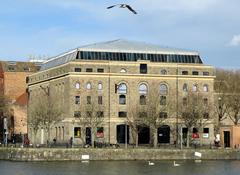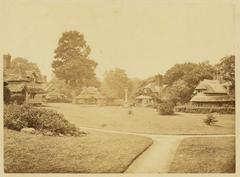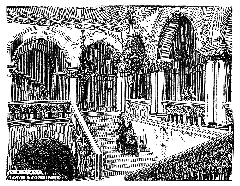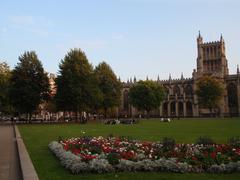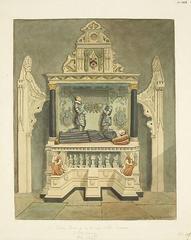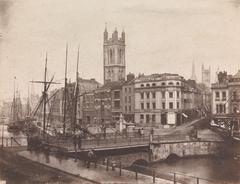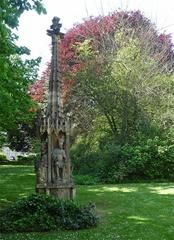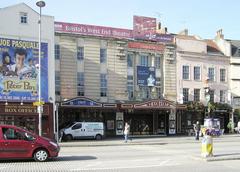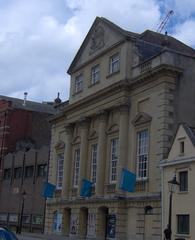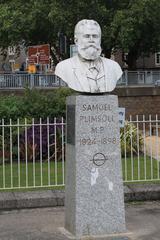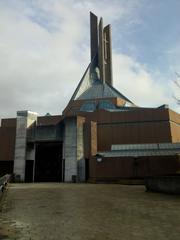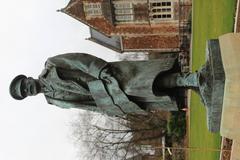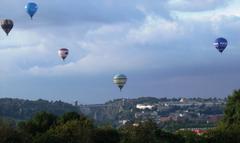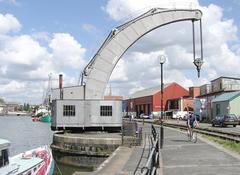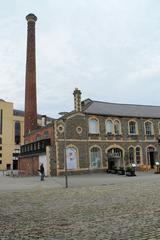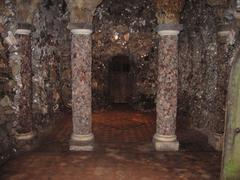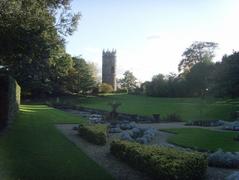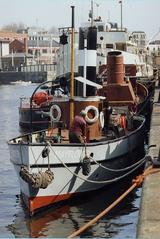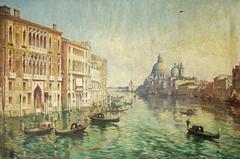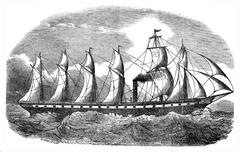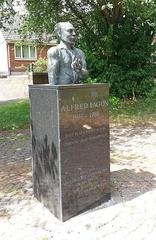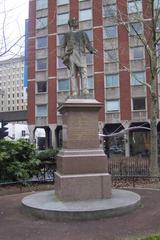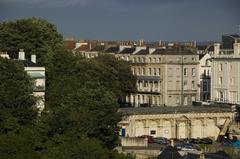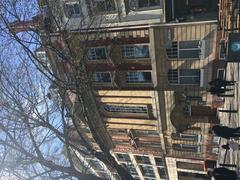Castle Park Bristol: Visiting Hours, Tickets, and Historical Sites Guide
Date: 03/07/2025
Introduction
Nestled in the heart of Bristol, Castle Park is a vibrant urban oasis where centuries of history meet modern city life. Once the site of the formidable medieval Bristol Castle, now a blend of evocative ruins, peaceful green spaces, and bustling community events, Castle Park offers a unique destination for history lovers, families, and travelers alike. Its central location, free year-round access, and proximity to Bristol’s main attractions make it an essential stop for anyone exploring the city. In this comprehensive guide, you’ll discover Castle Park’s visiting hours, ticket details, accessibility features, historical background, and practical tips for an unforgettable visit (Bristol City Council’s Castle Park page, Wikipedia, BBC News).
Table of Contents
- Early Origins and Medieval Foundations
- Bristol Castle: Royal Stronghold and Strategic Asset
- Decline, Demolition, and Transformation
- The Bristol Blitz and Post-War Redevelopment
- Creation of Castle Park
- Archaeological Significance and Heritage Protection
- Modern Developments and Community Role
- Visitor Information: Visiting Hours and Tickets
- Site Highlights and Features
- Accessibility, Amenities, and Family-Friendly Facilities
- Events and Community Activities
- Connectivity and Nearby Attractions
- Sustainability and Park Etiquette
- Visitor Tips
- Frequently Asked Questions (FAQ)
- Conclusion and Call to Action
Early Origins and Medieval Foundations
Castle Park’s history stretches back to the Anglo-Saxon period, when a fortified settlement emerged near the River Avon’s crossing point at Bristol Bridge. This strategic location fostered the growth of a town that would become a center for trade and defense (Wikipedia).
Following the Norman Conquest, the imposing Bristol Castle was constructed in the 11th century. It quickly became a symbol of royal authority and played a pivotal role in regional and national conflicts, including the English Civil War (BBC News). The castle’s architecture featured a great hall, keep, and extensive defensive walls, fragments of which can still be seen in the park today (Nomadic Matt).
Bristol Castle: From Stronghold to Ruin
Bristol Castle grew to become one of England’s most important medieval fortifications, serving as a royal residence and military base. Over centuries, the castle was expanded and fortified, underpinning Bristol’s strategic significance. After the English Civil War, Parliament ordered its demolition in 1655 to prevent further military use. Much of the castle’s stone was repurposed for city development, but key remnants—including the vaulted chambers of the King’s Hall—survive and are integrated into Castle Park today (BBC News, Wikipedia).
Decline, Demolition, and Transformation
By the 18th and 19th centuries, the area had become a bustling commercial district, its medieval street pattern still visible amid a mix of Tudor, Georgian, and Victorian architecture. The devastation of World War II, particularly the Bristol Blitz, obliterated much of the area’s historical fabric, including shops and residences. The ruins of St Peter’s Church, damaged in the bombings, remain as a poignant memorial (Nomadic Matt).
Creation of Castle Park
The need for green space and commemoration led to the establishment of Castle Park in the 1970s. The park was designed to preserve surviving ruins, archaeological remains, and memorials, blending heritage with recreation (Bristol City Council). Key features include:
- Ruins of St Peter’s Church: A memorial to the victims of the Bristol Blitz.
- Vaulted Chambers Café: Housed within the last significant above-ground remnant of Bristol Castle.
- Castle Remains: Including fragments of the south and west walls, sally port, and keep foundations.
- Interpretation Panels: Providing historical context and archaeological insights throughout the park.
Archaeological Significance and Heritage Protection
Castle Park is one of Bristol’s most important archaeological sites, with parts designated as scheduled ancient monuments. The Vaulted Chambers are Grade II-listed, and expanded legal protections ensure the ongoing preservation of both visible and buried remains (BBC News, Bristol City Council).
Modern Developments and Community Role
Today, Castle Park remains a vital green space and community hub, open 24/7 with free admission (Bristol City Council). Recent enhancements, such as the S-shaped Castle Bridge, improve connectivity with Finzels Reach and the Floating Harbour, while ongoing events and festivals enrich Bristol’s cultural calendar (All Events in Bristol, Wikipedia).
Visitor Information: Castle Park Bristol Visiting Hours and Tickets
- Opening Hours: Open 24 hours a day, year-round.
- Admission: Free entry; no tickets required.
- Vaulted Chambers Café: Typically open 9:00 AM–5:00 PM (check for seasonal changes).
- Accessibility: Flat, paved paths suitable for wheelchairs and strollers; accessible entrances at all main points.
- Toilets: Public toilets available nearby in shopping centres and St Nicholas Market.
- Transport: Short walk from Bristol Temple Meads station, served by city buses, and accessible by bicycle.
- Parking: Nearby city centre car parks; no dedicated parking for the park itself.
For the latest opening hours, events, and accessibility updates, visit the Bristol City Council Castle Park page.
Site Highlights and Features
Medieval Remnants
- Castle Vaults: Subterranean chambers, occasionally open via guided tours, reveal medieval defensive design (Bristol City Council).
- Ruins and Foundations: Traces of Bristol Castle’s original footprint are integrated into the park’s pathways.
St Peter’s Church
- 12th-century Ruins: Preserved as a memorial to victims of the Bristol Blitz (Historic England).
- Reflective Gardens: Tranquil spaces for remembrance and contemplation.
Riverside Lawns and Panoramic Views
- Expansive lawns and mature trees line the riverside, providing peaceful spots for picnics, sunbathing, and city views of Bristol Cathedral, St Mary Redcliffe, and beyond.
Public Art and Sculptures
- Rotating and permanent installations reflect Bristol’s creative spirit and are scattered throughout the park.
Accessibility, Amenities, and Family-Friendly Facilities
- Play Areas: Modern, fenced play zones for children of all ages.
- Seating: Benches and picnic tables throughout shaded and riverside areas.
- Food: Food vendors seasonally present; St Nicholas Market and nearby cafés offer diverse dining (Wanderers of the World).
- Drinking Fountains: Available within the park.
Events and Community Activities
Castle Park hosts open-air concerts, food festivals, art fairs, and community workshops year-round. Its open lawns accommodate gatherings, fitness classes, and environmental initiatives. For event listings, see Visit Bristol Events and All Events in Bristol.
Connectivity and Nearby Attractions
- St Nicholas Market: Famous for food and independent shops (Hues of Delahaye).
- Bristol Cathedral, Cabot Tower, Clifton Suspension Bridge: All easily accessible via public transport or short walks.
- Frome Valley Walkway: Starts at Castle Park and connects to other green spaces (Wanderers of the World).
Sustainability and Park Etiquette
Castle Park is managed with a focus on sustainability and biodiversity. Visitors are encouraged to use recycling bins, respect plantings and heritage features, and participate in green initiatives.
Visitor Tips
- Best Time to Visit: Spring and summer for outdoor activities; early morning or late afternoon for photography.
- Dog-Friendly: Dogs are welcome but must be kept on leads in designated areas.
- Cycling: Permitted on certain paths; bike racks at entrances.
- Safety: The park is generally safe, with regular patrols; lighting is limited after dusk.
Frequently Asked Questions (FAQ)
Q: What are Castle Park Bristol’s visiting hours?
A: Open 24/7, year-round. Most facilities accessible during daylight.
Q: Is there an entrance fee or are tickets required?
A: No; park entry is free and unticketed.
Q: Is Castle Park accessible for visitors with disabilities?
A: Yes; flat, paved paths and accessible entrances.
Q: Are guided tours available?
A: Yes, especially for the castle vaults; see Bristol City Council for schedules.
Q: Are there toilets and refreshments?
A: Toilets nearby in shopping centres and St Nicholas Market; food vendors operate seasonally.
Q: Can I bring my dog?
A: Yes, but dogs must be on leads in certain areas.
Conclusion and Call to Action
Castle Park Bristol offers a rich blend of history, culture, and natural beauty, making it an unmissable stop in the city. With its central location, free access, and diverse amenities, it provides a perfect setting for exploring Bristol’s heritage or simply enjoying a peaceful day outdoors. For the latest updates, guided tours, and curated tips, download the Audiala app and follow us on social media. Start planning your visit now and experience the vibrant heart of Bristol at Castle Park!
Visuals and Media
Include high-quality images of Castle Park’s medieval ruins, vibrant lawns, play areas, and panoramic city views with alt tags such as “Castle Park Bristol historic ruins” and “Castle Park Bristol family picnic area.” Embed interactive maps or virtual tours via the Bristol City Council website to assist with navigation.
Internal Links
References and Official Links
- Castle Park, Bristol (Wikipedia)
- Bristol Castle Demolition and Heritage (BBC News)
- Castle Park Historical Insights and Visitor Information (Bristol City Council)
- Castle Park Cultural and Social Significance (Bristol Post)
- Castle Park Redevelopment Plans and Community Engagement (Secret Bristol)
- Castle Park Visitor Guide and Travel Tips (Nomadic Matt)
- Historic England Listing for St Peter’s Church
- Hues of Delahaye: Bristol Itinerary
- Visit Bristol Visitor Information
- Wanderers of the World: Free Things to Do in Bristol
- UK Travel Planning: Bristol Guide
- All Events in Bristol: Castle Park
